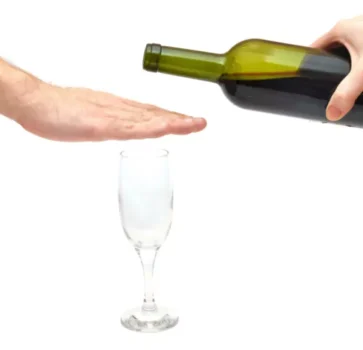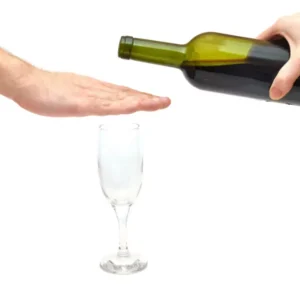
These medications should be used in alcohol relapse statistics conjunction with therapy and other recovery strategies. If you notice any of these signs or symptoms, call 911 immediately, try to wake the person, check for breathing, administer Naloxone if possible and stay with the person until medical help arrives. If you are friend or family to someone with an opioid use disorder, it would be a good idea to keep Naloxone on hand for if and when an overdose occurs.

Guide to Helping Someone Enter Drug Rehabilitation
Alcohol rehab is a structured process that combines medical care, therapy, and relapse Alcoholics Anonymous prevention strategies to help individuals overcome addiction and achieve long-term sobriety. People in recovery from alcohol addiction are at the highest risk of relapse during the early alcoholic recovery stages, in the immediate moments after a traumatic event or during times of transition. Most people in recovery must actively take steps to avoid relapse for the rest of their lives. Objective evidence of abstinence has been a critical component of many relapse prevention programs.

How can I reduce my risk of relapse?

These different processes that contributed to the overall trend of decreased alcohol-related problems with increasing age suggest that “maturing out”—as young people assume adult roles—is not a sufficiently complete account of remission rates across the life span. The 62% remission rate in the helped sample is comparable to the 57% that Haver, Dahlgren & Willander 49 found among initially untreated women with alcohol use disorders, but is somewhat higher than the 20–50% rate shown typically in treated samples 1,2. This finding probably reflects the fact that our sample was composed of individuals who had never been in treatment before and were at a relatively early stage in their alcoholism careers. The 43% remission rate among individuals who did not obtain help quickly is consistent with the rates obtained in prior studies of individuals who were aware of their alcohol problem and sought but did not obtain treatment 3,4.
Does Insurance Cover Opioid Rehab?
- A priority for future research is to find out why individuals who recognize their alcohol problems and initiate help seeking do not obtain timely help.
- Alcohol addictionexperts have long been aware thatstress increases the riskof alcohol relapse.
- Such disparities indicate that social determinants play a critical role in substance use and should be addressed alongside physical and psychological determinants.
- However, those who complete longer treatment programs are better equipped to build a robust foundation for recovery.
- Overconfidence in one’s ability to maintain sobriety and neglecting necessary support systems can contribute to relapse.
Data analyses were carried out using Statistical Package Social Sciences 17 software (SPSS, USA). Group differences for all categorical variables https://ecosoberhouse.com/ were evaluated using Chi-square or Fisher’s exact probability test as applicable. Group differences in continuous variables were evaluated with student’s unpaired Welch’s t-test. Correlations were carried out with Pearson’s rank correlation coefficient and multiple regression analysis.

What are some common triggers for alcohol relapse?
High-risk behaviors and drug abuse also result in much higher chances of contracting viral infections such as hepatitis or HIV. Mental illness and substance abuse (comorbidity) is relatively common among military veterans. The longer an alcoholic stays sober, the better their chances are for long-term sobriety. Overall, among people sober for five years, the chances of relapsing are less than 15%, according to Psychology Today. They may stop taking care of themselves or start making excuses for their problems. What former clients have to say, via personal recommendations and testimonials, can speak volumes about the facility, its staff, the treatment, and the overall experience.
- Individuals with only a high school diploma display relapse rates of nearly 53%, while graduates from college experience a much lower rate of around 35%.
- By using those important techniques, people in recovery will adeptly maneuver any threat of relapse.
- With respect to race/ethnicity, results for Whites were generally consistent with the full sample, but findings differed for Hispanics and Blacks.
- If you notice any of these signs or symptoms, call 911 immediately, try to wake the person, check for breathing, administer Naloxone if possible and stay with the person until medical help arrives.
- In this blog post, we’ll explore 50 alcohol relapse statistics to help you better understand the challenges you may face while trying to stay sober.
American Addiction Centers provides 24-hour medical detox, premium rehabilitation treatment, and ongoing care. If you’re struggling with an AUD or SUD and are looking for a solution, reach out to one of our admissions navigators. Many physical relapses occur during times when the individual believes their use will go undetected.
Alcohol Relapse Statistics
Overall, addressing socioeconomic challenges is vital in developing effective interventions for those recovering from alcohol use disorder. Programs that improve employment opportunities and educational access, along with robust support networks, may enhance recovery outcomes, ultimately leading to better long-term sobriety rates. Research indicates that the duration of treatment plays a critical role in recovery outcomes.
Such disparities indicate that social determinants play a critical role in substance use and should be addressed alongside physical and psychological determinants. Differences were seen in substance use history with opioid group having an earlier age of development of dependence pattern and past/current history of other substance use. Negative affect correlated positively with craving and perceived criticism from the family and negatively correlated with self-efficacy in both the groups.
What is the impact of treatment duration on relapse rates?
These findings held for individuals who initially obtained help and for those who did not. To reduce the risk of relapse, it is important for people in recovery to identify their triggers and develop strategies for managing them. It is also important to have a strong support system in place that can provide emotional and practical help when needed. Approximately 40% of individuals in recovery credit social support as a critical factor for their success. This support can help individuals cope with the challenges they face during their sobriety journey. Regular participation in support groups like Alcoholics Anonymous (AA) has been shown to correlate with a 60% reduction in the risk of relapse, highlighting the effectiveness of peer support.
National Statistics on Relapse Rates
- An alcoholic relapse or relapse into alcoholism is a return to the compulsive pursuit and consumption of alcohol after a period of sustained sobriety.
- Counselors may select from a menu of services that meet the specific medical, mental, social, occupational, family, and legal needs of their patients to help in their recovery.
- Family support can provide encouragement, accountability, and assistance in managing stressors that may contribute to relapse.
- Relapse rates vary significantly depending on the specific substance and the individual’s unique circumstances.
- Researchers and practitioners have identified multiple steps which help to explain the progression of many individuals through the process of recovery.
A CARF-accredited facility demonstrates high-quality programming and treatment that is tailored to the individual. Several forms of therapy have been widely used to help individuals struggling with addiction. The various forms of therapy share many common elements, and a combination of different approaches are useful for an individual. Some patients early in recovery may set up unreasonable expectations in that they believe they will never again think about using or having a relapse. Providers need to emphasize that occasional thoughts of using or cravings are a common part of recovery so they can help the patient equip themselves with the skills needed to work through these challenges.
